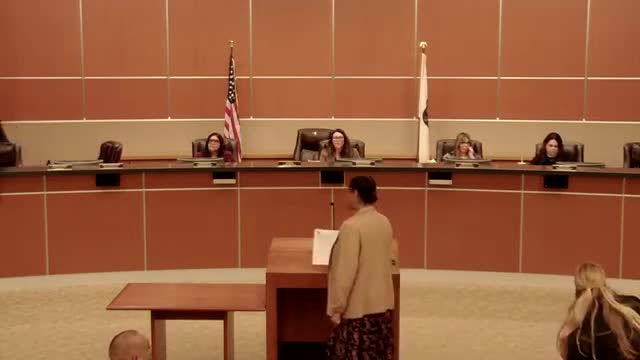WUSD reports CAASPP scores: 41% ELA, 28% math; district outlines literacy and intervention plan
October 10, 2025 | West Sacramento, Yolo County, California
This article was created by AI summarizing key points discussed. AI makes mistakes, so for full details and context, please refer to the video of the full meeting. Please report any errors so we can fix them. Report an error »

Washington Unified School District leaders presented preliminary 2024–25 California Assessment of Student Performance and Progress (CAASPP) and CAST results at the Oct. 9 board meeting, then described instructional steps the district will take to address gaps.
Assistant Superintendent Autry Streak and Director of Curriculum Brittany Billingsley told the board that districtwide 41% of students scored in the two highest CAASPP ELA performance levels (met or exceeded), while 28% did so in math. Streak said those results were below the statewide averages for 2024–25: 48% in ELA and 37% in math. “That’s 7% below the state in ELA and about 9% below in math,” Streak said.
Staff showed three-year trends by grade and subgroup and examined cohort movement between grades. Billingsley highlighted “glows” — schools and student groups that improved — and areas that need targeted work. Noted bright spots included growth among certain groups at River City High School and improvements in some Westmore Oaks and Westfield grade teams.
The district outlined immediate and near-term steps to boost outcomes:
- Continue implementation of newly adopted K–11 ELA instructional materials with sustained professional learning and coaching, using partner UnboundEd to support an “at-grade-level, engaging, affirming, meaningful” framework.
- Protect common instructional minutes across elementary sites and require in-school intervention blocks (district leaders said schedules include both core instruction and a 30-minute intervention window daily).
- Expand common formative assessments (CFAs) and eight-week interim assessments for math and provide teacher teams time to analyze results and adjust pacing.
- Implement the state-mandated K–2 reading screener (DIBELS 8 mCLASS) beginning in November to identify students who need early intervention.
- Ensure IEP goals are aligned to grade-level standards and expand Universal Design for Learning (UDL) training districtwide.
Board members asked for clarification on cohort slides, subgroup counts and whether a 3 percentage-point change is statistically significant; staff said they will follow up with county office guidance on statistical thresholds and provide more detailed reports that break performance down by specific standards and content areas.
The presentation closed with a plan to publish a district dashboard on Nov. 13 and to roll out site-level one-pagers and professional learning series so principals and teachers can dig into localized data and practice changes.
No board action was required; staff presented the data for discussion and planned follow-up.
Assistant Superintendent Autry Streak and Director of Curriculum Brittany Billingsley told the board that districtwide 41% of students scored in the two highest CAASPP ELA performance levels (met or exceeded), while 28% did so in math. Streak said those results were below the statewide averages for 2024–25: 48% in ELA and 37% in math. “That’s 7% below the state in ELA and about 9% below in math,” Streak said.
Staff showed three-year trends by grade and subgroup and examined cohort movement between grades. Billingsley highlighted “glows” — schools and student groups that improved — and areas that need targeted work. Noted bright spots included growth among certain groups at River City High School and improvements in some Westmore Oaks and Westfield grade teams.
The district outlined immediate and near-term steps to boost outcomes:
- Continue implementation of newly adopted K–11 ELA instructional materials with sustained professional learning and coaching, using partner UnboundEd to support an “at-grade-level, engaging, affirming, meaningful” framework.
- Protect common instructional minutes across elementary sites and require in-school intervention blocks (district leaders said schedules include both core instruction and a 30-minute intervention window daily).
- Expand common formative assessments (CFAs) and eight-week interim assessments for math and provide teacher teams time to analyze results and adjust pacing.
- Implement the state-mandated K–2 reading screener (DIBELS 8 mCLASS) beginning in November to identify students who need early intervention.
- Ensure IEP goals are aligned to grade-level standards and expand Universal Design for Learning (UDL) training districtwide.
Board members asked for clarification on cohort slides, subgroup counts and whether a 3 percentage-point change is statistically significant; staff said they will follow up with county office guidance on statistical thresholds and provide more detailed reports that break performance down by specific standards and content areas.
The presentation closed with a plan to publish a district dashboard on Nov. 13 and to roll out site-level one-pagers and professional learning series so principals and teachers can dig into localized data and practice changes.
No board action was required; staff presented the data for discussion and planned follow-up.
View full meeting
This article is based on a recent meeting—watch the full video and explore the complete transcript for deeper insights into the discussion.
View full meeting
